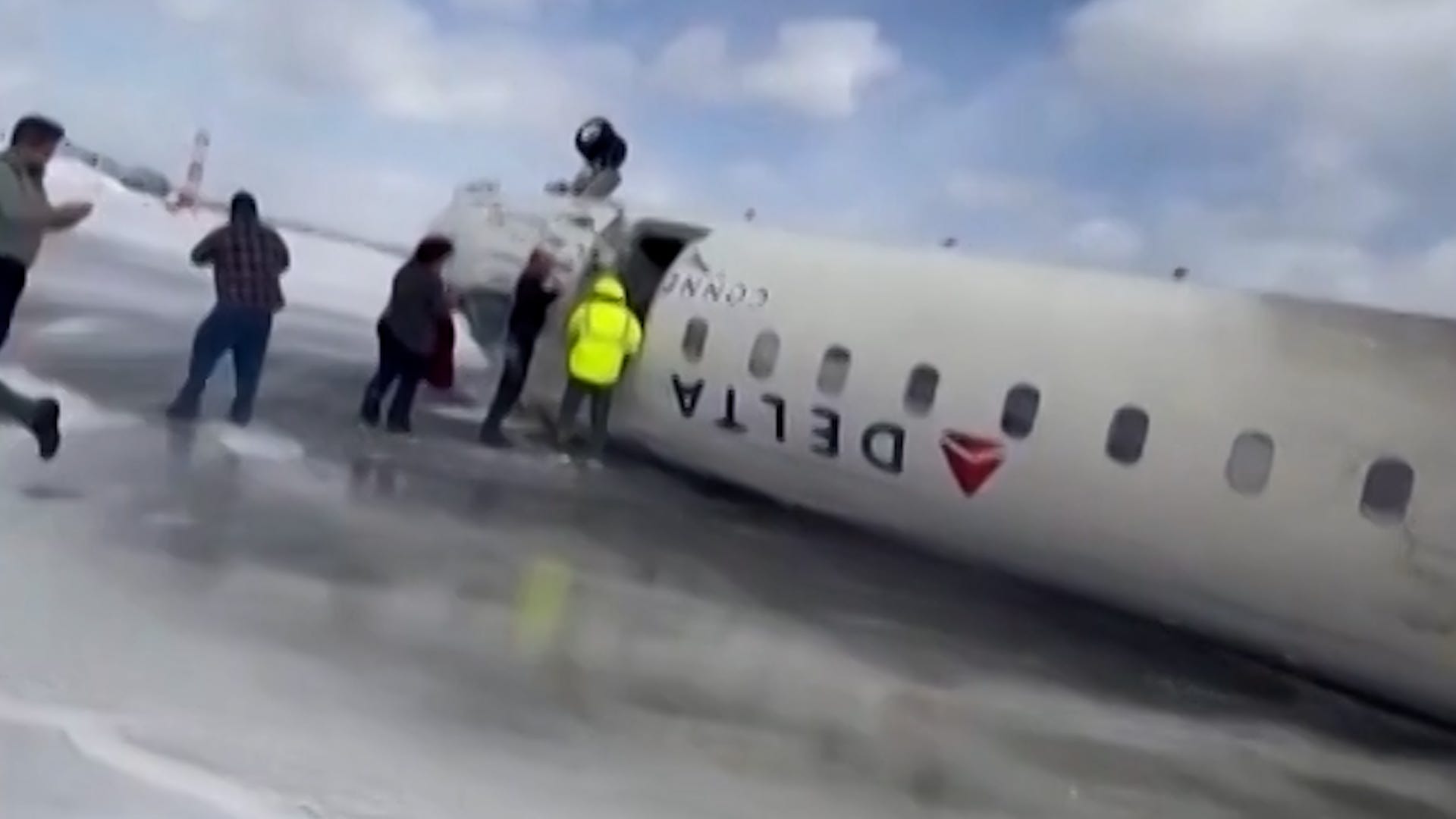What Went Wrong? Investigators Probe Landing Gear Collapse In Fiery Toronto Plane Crash

- A Delta Air Lines regional jet flipped over on the runway at Toronto's Lester B. Pearson International Airport last month due to a faulty landing gear.
- The right main landing gear collapsed after making contact with the runway, causing the wing to detach from the fuselage.
- While all passengers and crew members survived, 21 occupants were injured, with two considered to be in serious condition at the time.
Faulty landing gear appears to be the primary factor that caused a Delta Air Lines regional jet to flip over on the runway at Toronto's Lester B. Pearson International Airport last month.
According to a preliminary report released by the Transportation Safety Board of Canada on Thursday, the jet was performing a routine landing when its right main landing gear collapsed after making contact with the runway.
"At touchdown, the following occurred: the side-stay that is attached to the right (main landing gear) fractured, the landing gear folded into the retracted position, the wing root fractured between the fuselage and the landing gear, and the wing detached from the fuselage, releasing a cloud of jet fuel, which caught fire," the TSB's report said. "The exact sequence of these events is still to be determined by further examination of the fracture surfaces."
The report suggested that there were gusty winds at the time of landing, leading pilots to fly the approach at a slightly increased speed, which was in line with standard company procedure in such conditions.
According to the report, the right main landing gear contacted the runway first, as a result of the plane being slightly banked at the time of landing, which is also not unusual, especially in gusty conditions.
"For everyone at Endeavor Air and Delta, nothing is more important than the safety of our customers and our people. That’s why we remain fully engaged as participants in the investigation led by the Transportation Safety Board of Canada," Delta Air Lines said in a statement. "Out of respect for the integrity of this work that will continue through their final report, Endeavor Air and Delta will refrain from comment."
The TSB's report provided additional detail about injuries from the flight. While all 76 passengers and four crewmembers survived, the report acknowledged that 21 occupants were injured, with two of those considered to be in serious condition at the time of their hospitalization. All of the affected travelers were eventually released from the hospital.
The TSB defines a serious injury as "(a) a fracture of any bone, except simple fractures of fingers, toes or the nose; (b) lacerations that cause severe hemorrhage or nerve, muscle or tendon damage; (c) an injury to an internal organ; (d) second or third degree burns, or any burns affecting more than 5% of the body surface; (e) a verified exposure to infectious substances or injurious radiation; or (f) an injury that is likely to require hospitalization."
Because the plane became inverted, some of the occupants may have been injured when they released their seatbelts and fell toward the aircraft ceiling, which was resting on the ground, according to the report.
The TSB said it did not find any evidence of seatbelt failure.
The investigation into the incident continues, and the TSB did not provide a timeline for issuing its final report.
Zach Wichter is a travel reporter and writes the Cruising Altitude column for USA TODAY. He is based in New York and you can reach him at zwichter@usatoday.com.


